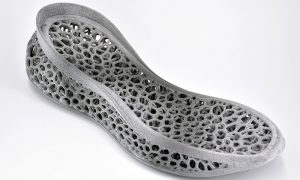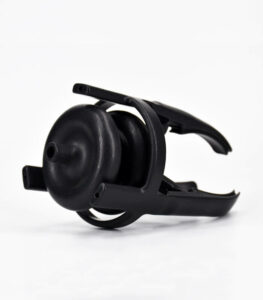The main difference between these two technologies is their heat source. SLS uses a laser to scan and sinter across each cross-section. MJF, on the other hand, dispenses an ink (fusing agent) on the powder to absorb infrared light. Let’s get a bit more into details.
Multi Jet Fusion is an additive manufacturing technique developed by the company HP. It creates parts additively thanks to a multi-agent printing process. During this process, a fusing agent is applied to a material layer, fusing the particles where they need to. Then a detailing agent is used to modify fusing and create fine details and smooth surfaces. The area exposed to the energy leads to reactions between the agents and the material to make the part.
The build box is removed from the printer when the printing process is complete. Like any powder-bed technology, n operator carefully extracts the parts from the build box and removes the remaining powder thanks to brushes and air blowers.

SLS is an additive manufacturing method creating parts additively by sintering fine polymer powder particles to fuse them locally.
During the 3D printing process, the SLS machine preheats the bulk powder material in the powder bed somewhat below its melting point. Then, a roller will apply a layer of polymer powder, the laser will sinter the powder according to the 3D file (STL file for example), and the build platform will lower before applying a new layer of powder. The process will then be repeated until the desired part is created.

Here are the similarities between these two additive manufacturing processes:
- They are deposited on the fusion of powdery material and implement a sintering process requiring a heat source.
- Neither 3D printing technique needs support structures during the printing process, allowing the creation of complex geometries.
- They are mainly used with thermoplastics or elastomers.
- They can both be used to boost your product development but also your production. Both produce durable parts for functional testing and end use.
- They create objects layers by layers according to a 3D model (or STL file).


 Connect with Google
Connect with Google Connect with Facebook
Connect with Facebook


